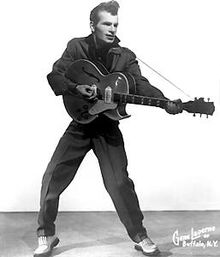
This cheerful, seemingly simple song is far from simple and not even all that cheerful. I’ll have to admit up front here that my rabbit trails petered out before any definitive conclusions were reached. But here’s what I was able to come up with:
Let’s start out with the original nursery rhyme about a crooked man and his various crooked accoutrements:
(or, in some versions, he had a crooked smile,)
You may know already that these lines are from our old friend “Mother Goose,” a figure that crops up in nursery rhymes and folk tales, both in English and in French (where she is “la mere l’Oye”).* You may also know that many of these so-called “nursery rhymes” actually have specific historical meanings. So “Ring Around the Rosy” is actually about the black plague. “Mary, Mary, Quite Contrary” is about Bloody Mary. And so forth
Who’s the crooked man? Well, pretty much all of the sources I consulted say that he was a Scottish military leader, General Alexander Leslie, who during the reign of the English king Charles I signed a covenant that guaranteed Scotland religious and political freedom even as they stayed a part of Britain, something that the Scots as a whole didn’t necessarily want to do. (Scotland was united with England upon the death of Queen Elizabeth I in 1603 when James VI of Scotland also became James I of England; Elizabeth had no children and James was her closest relative.) So the idea is that all of the “crookeds” have to do with the conflict between the two countries, with the crooked mile, for instance, referring to the border between the two countries and the “stile,” or gate, being the alliance itself. There’s a strong implication that Leslie was bribed in some way, since he found a coin–sixpence–and used it to buy a cat (England) which then took over (“caught”) a mouse (Scotland). The crooked house would be the united government under which these two countries were being forced to live in spite of their differences.
So far not too bad, right? But there are other mysterious issues with this song. Let’s take a look at the second and third verses:
Well, this crooked little man and his crooked little smile
Took his crooked sixpence and he walked a crooked mile
Bought some crooked nails and a crooked little bat
Tried to fix his roof with a rat-tat-tat-tat-tat.
Now this crooked little man and his crooked cat and mouse
They all live together in a crooked little house
Has a crooked door with a crooked little latch
Has a crooked roof with a crooked little patch.
These verse are not and never have been, as far as I’ve been able to determine, in the original nursery rhyme. It does make a certain amount of sense, though, if you’re seeing the whole situation as being a political one with disagreeing countries being jammed together into a rickety structure, that the nails holding it together would be crooked and the roof would be leaking. Maybe there’s some early source for these additional verses, but I haven’t found it. There are also a couple of super-creepy versions of the poem—in one the little man hangs himself, and in another he kills his crooked wife and kids. It’s fair to say that those verses aren’t included in the sunny little “songs for kids” YouTube videos of this song!
But wait a minute. The words and music to the standard version “Don’t Let the Rain Come Down” are credited to a couple of guys named Ersel Hickey and Ed E. Miller. Are they historical figures? Were they sitting there in their plumed hats with their quill pens back in the 1600’s, taking dictation from Mother Goose? Of course not, you silly people! That would be too simple. Hickey was a rather minor figure in 1950’s rock music, with his style labeled “rockabilly.” He can be accessed on YouTube singing a few songs, notably his first hit “Bluebirds Over the Mountain.” Here’s what’s so puzzling: he never recorded “Don’t Let the Rain Come Down.” It was first recorded in 1960 by a folk singer named Jimmie Rodgers in an album titled “An Evening of Folk Songs,” but its real popularity was started with its performance by the Serendipity Singers in 1964. And who was Ed Miller? The only piece of information on him is that he’s credited with the words to the song. That’s it. I guess he was a friend of Hickey’s, but that’s pure speculation on my part. So where did Miller get the extra verses? And how did he come up with the repeated chorus about the rain, an idea that doesn’t appear at all in the nursery rhyme? And why would Hickey have been interested in writing music to the words? I just can’t quite see a would-be Elvis (Hickey was a great fan of the King) taking such an interest in a nursery rhyme. There are perhaps some questions that are just going to have to stay unanswered, and I’m afraid I’ll have to leave it at that.
Below you can listen to the Jimmy Rodgers original–you’ll notice that the tune is a little different from the one we’re more familiar with today:
And the Serendipity Singers’ version:
Indulge in a little nostalgia and listen to Mr. Hickey singing “Bluebirds”:
*If you’d like to read more theories than you would have thought possible about where the name “Mother Goose” comes from, you can read this Wikipedia article.
© Debi Simons

